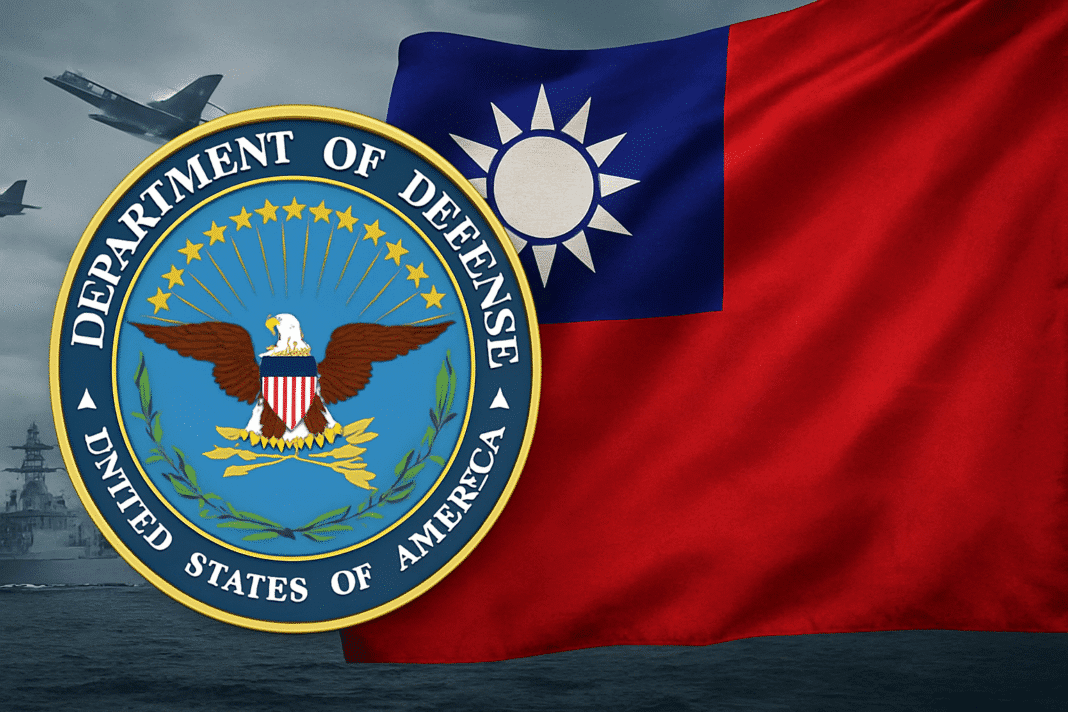A senior nominee for the Pentagon’s top position overseeing the Indo-Pacific region has made a strong statement supporting former U.S. President Donald Trump’s earlier call for Taiwan to spend up to 10% of its Gross Domestic Product (GDP) on defense. During his confirmation hearing before the Pentagon-linked U.S. Senate Armed Services Committee, nominee John Noh expressed firm support for Trump’s stance. He said that given the threats Taiwan faces from China, the island’s defense spending should reflect the seriousness of its security situation.
Pentagon Official Supports Higher Taiwan Defense Spending
Taiwan’s proposed defense budget for next year is expected to reach 3.32% of its GDP. This is part of the island’s ongoing effort to strengthen its military in response to increasing pressure from China. Taiwan’s President Lai Ching-te had already announced in August that the goal is to raise the figure to 5% by 2030.
John Noh described these recent moves as “promising,” emphasizing that Taiwan is taking its security needs more seriously than before. He also mentioned that it was President Trump who first urged Taiwan to spend up to 10% of its GDP on defense, calling the island’s situation an “existential threat” due to the military pressure from China’s People’s Liberation Army (PLA).
Black Moon hack reveals secret Russian military support for China, raising Taiwan concerns
“I strongly support that,” Noh said, adding that Taiwan’s efforts to raise its defense budget show that it is moving in the right direction.
The Pentagon nominee’s comments underline Washington’s growing attention to Taiwan’s security. His endorsement signals that U.S. defense officials continue to prioritize the island’s ability to deter aggression in the Indo-Pacific region.
Focus on Asymmetric Warfare and Self-Reliance
In recent years, the Pentagon has encouraged Taiwan to reshape its military strategy to prepare for “asymmetric warfare.” This approach focuses on using smaller, more flexible, and cost-effective systems to counter a larger and stronger opponent like China.
Backed by the Pentagon’s strategic advice, Taiwan’s defense planners are investing in mobile and lethal weapon systems, such as missiles, drones, and anti-ship defenses. These systems can provide powerful deterrence even against a much larger force.
Asymmetric warfare means focusing on innovation over size — using smarter strategies and weapons that can offset the enemy’s advantages. For example, drones can be used not just for surveillance, but also for attack missions. This helps Taiwan defend its coastlines and deter potential attacks without relying solely on traditional large-scale military hardware.
This shift toward asymmetric defense has become more urgent as China continues to increase military activity around the island. China frequently sends fighter jets and naval ships near Taiwan and engages in what officials describe as “gray zone activities,” actions that apply pressure but stop short of open conflict.
The Pentagon views these gray zone activities as a major concern because they aim to exhaust Taiwan’s defenses without triggering direct war. For that reason, Washington continues to work closely with Taipei on developing countermeasures that enhance its resilience and readiness.
Taiwan’s Defense Minister Reaffirms Commitment Amid Pentagon Attention
Following Noh’s remarks in Washington, Taiwan’s Defense Minister Wellington Koo responded to reporters at the parliament in Taipei on Wednesday. He explained that Taiwan’s defense spending is determined by the level of threat from the enemy and the need to maintain a strong and flexible military.
Koo said that Taiwan is focusing on building its defense around four key areas:
- Asymmetric warfare capabilities,
- Resilience,
- Strengthening the reserves, and
- Countering China’s gray zone activities.
Koo said Taiwan is already carrying out military reforms and live drills to make its forces stronger and more adaptive. “The president has promised to steadily raise defense spending to reach 5% of GDP,” he added.
The Pentagon sees Taiwan’s defense buildup as key to its Indo-Pacific strategy, with the U.S. providing weapons, training, and support despite no formal ties.
Taiwan aims to balance economic growth with security, gradually increasing defense spending from 3.32% to 5%. John Noh’s backing of Trump’s 10% goal reflects how seriously the Pentagon views Taiwan’s role in regional stability as China’s military pressure grows.
